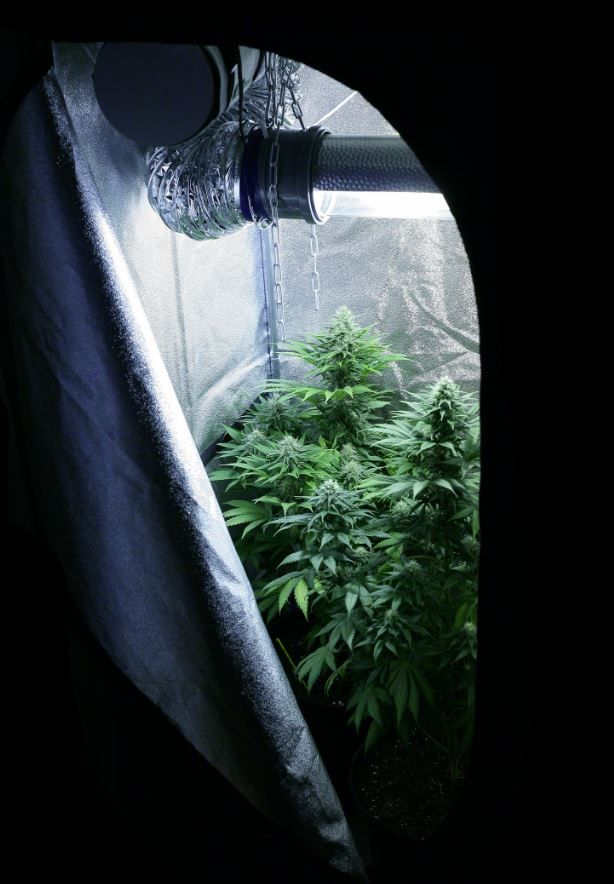How To Control Humidity In Your Grow Room
Published :
Nov 15, 2016
Categories :
Cannabis cultivation

Everyone is aware that water, lighting and nutrients are key to big bud yields. Yet humidity levels also play a big role in ensuring that your weed plants stay healthy and produce potent produce.
Indoor cannabis growing is a multidimensional art form and many different factors need to be considered in order to maximise the quality and quantity of yields. Lighting, nutrients and watering is the triad that usually pops to mind when thinking about a plant's primary needs. Another extremely important, yet often overlooked, element for optimising herbal health is humidity.
Achieving the right levels of humidity is important for a variety of reasons. It helps to avoid certain plant diseases and nutritional deficiencies, enables a good rate of growth and even increases the amount of resin present upon your weed.
HUMIDITY AND TEMPERATURE
Humidity and temperature are closely tied and it is important to realise how they effect each other in order to create the ideal growing environment at the correct stages.
Humidity is basically a measurement of the amount of water vapour in the air translated into a percentage. There are varying ways to measure humidity, with relative humidity (RH) being the most discussed among marijuana growers. RH is a measurement of the amount of water present in the air in comparison to the maximum amount of water than can be present in the air at the current temperature.
The higher the temperature of the air the more potential it has to hold a larger amount of water; warm air holds more water vapour than cold air. It is therefore important to extract warm air from the growing environment. Cannabis plants can absorb water from two places, through the soil (nutrient solution if growing hydroponically) via the root system and through the air via the leaves. When the humidity is high, cannabis plants tend to use the leaves to absorb moisture from the air, lessening the amount of water they uptake through the roots. This can lead to problems in nutrient management as the nutrients are present in the soil/solution where the root system is growing. When the humidity is low, the evaporation pressure is heightened, allowing the plant to extract water and nutrients from the soil. However if the humidity is too low the evaporation pressure will increase to the point where the plant will take protective measures against dehydration. This may result in the stomata - tiny openings in leaves that plants breathe through - closing, which will stunt growth.
CONTROLLING HUMIDITY IN THE GROW ROOM

If your grow room is maintaining too much humidity or your plants are entering a stage where they require less water vapour in the air, levels can be lowered by:
- Increasing the ventilation settings on ventilation systems.
- Using fans to introduce cool and fresh air into the environment.
- Utilising a dehumidifier to extract excess water vapour from the air.
When the opposite is true and you are in need of increasing humidity levels, the following action can be taken:
- Use a humidifier machine in your grow room that will deliver a constant mist into the space, saturating the air with water vapour.
- Spray water on waterproof surfaces in the grow room.
- Place several containers full of water around the grow space that will evaporate water into the air.
- Increase the distance between yours plants and their light source to bring the temperature around the plants down.
To optimise humidity it is important to water your plants just after the light source is turned on. This is because the humidity levels skyrocket after watering and the temperature of the grow room will drop after the lights are turned off. Watering your plants just as the lights are applied with give ample time for evaporation to take place.
HUMIDITY LEVELS FOR DIFFERENT GROWING STAGES
Various stages of marijuana plant growth have preferred humidity levels. These stages can be divided into the seedling, vegetation and flowering period.
SEEDLINGS
Seedlings like a warm and wet environment. Although they have a taproot that allows them to absorb adequate amounts of water, they can also absorb it through their leaves. Humidity domes are a good way to trap moisture around young seedlings, ventilating when appropriate. 60% humidity is an ideal start, decreasing to 40% gradually.
VEGETATION PERIOD
During this stage a bigger root system is being established, which absorbs more water. Evaporation is also occurring through the leaves. An optimal humidity range is between 40-70% and can gradually be decreased by 5% on a weekly basis as the root system grows and the flowering stage approaches.
FLOWERING STAGE
It is very important to lower humidity during the flowering period as the root system is now well developed and the plant can obtain maximum levels of water and nutrients from the soil. Doing so will also protect flowers from the threat of bud rot as mould thrives in high humidity.
CUTTINGS
If you are cloning plants by growing cuttings be sure to keep the humidity levels high at 70%. Cuttings will not have much of a root structure when they are ready to be placed in the grow room so it is important that there is an adequate level of moisture in the air to decrease evaporation.






































